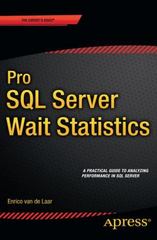Answered step by step
Verified Expert Solution
Question
1 Approved Answer
Problem 1 : Purpose of Big O notation in algorithm analysis and its significance in evaluating algorithm efficiency. Provide 2 - 3 paragraphs referring to
Problem :
Purpose of Big O notation in algorithm analysis and its significance in evaluating algorithm efficiency.
Provide paragraphs referring to books, journals or other web literature
B Consider the following code snippet:
for i in rangen:
printHello World!"
a What is the time complexity of the above code snippet in Big O notation?
Give the time complexity by writing a code and executing it Provide screenshots of the code.
b Explain your answer.
Based on the above code explain the above time complexity for each steps. Refer to literature for justification
C Determine the Big O notation representing their time complexity with a brief explanation: marks each
a fnnn
Big O Notation:
Explanation Refer to literature for justification
b gn logn
Big O Notation:
Explanation Refer to literature for justification
c hnn
Big O Notation:
Explanation Refer to literature for justification
Problem :
A Implementing a file system structure using a tree data structure.
Code of the this can be implemented using Tree not necessarily Binary Search Tree
Explanation
Screenshot of the code snippets
B Implement a binary search tree BST : Insert, Search delete and Traversal
Step by step explanation of the code for all the functions classes with the screenshots of the code and output
C Singly linked list and a doubly linked list
Singly Linked List: insertfrontvalue insertendvalue deletevalue and display Step by step explanation of the code for all the functions classes with the screenshots of the code and output
Doubly Linked List: insertfrontvalue deletevalue display and reversedisplay Marks
Step by step explanation of the code for all the functions classes with the screenshots of the code and output
Problem :: Stack data structure
pushitem pop peek isempty and getmin
Step by step explanation of the code for all the functions classes
output and its justification as required
Step by Step Solution
There are 3 Steps involved in it
Step: 1

Get Instant Access to Expert-Tailored Solutions
See step-by-step solutions with expert insights and AI powered tools for academic success
Step: 2

Step: 3

Ace Your Homework with AI
Get the answers you need in no time with our AI-driven, step-by-step assistance
Get Started


